Risk MangementProcess of TradingClassical ChartingHuman ElementMulti-Media RoomMiscellaneous DocumentsReal Vision SeriesEvergreen Thoughts
Intra-market (delivery) commodity spreads, a brief explanation
/by Peter BrandtThis content is for members only
Factor Trading Rules for Entries and Exits
/by Peter BrandtThis content is for members only
Symbols for the Months of Futures Contracts
/by Peter BrandtThis content is for members only
The Factor Chart Lab
/by Peter BrandtThis content is for members only
Setting Targets – Video
/by Peter BrandtThis content is for members only
PHO – Case Study
/by Peter BrandtThis content is for members only
The Factor Tracking Sheet Explained – Video
/by Peter BrandtThis content is for members only
IDing, Sizing, and Entering a Trade – Video
/by Peter BrandtThis content is for members only
Hierarchy of Principles to Tactics – Advancing Stop Orders in the Direction of a Profitable Trade
/by Peter BrandtThis content is for members only
Negative-carry and positive-carry forex trades
/by Peter BrandtThis content is for members only
3-Day Trailing Stop Rule (3DTSR)
/by Peter BrandtThis content is for members only
Factor’s Active List, Short List, Long List, Full Symbol Scroll
/by Peter BrandtThis content is for members only
What constitutes a breakout in futures and forex markets?
/by Peter BrandtThis content is for members only
Changes in my trading since writing Diary of a Professional Commodity Trader
/by Peter BrandtThis content is for members only
Factor’s Guidelines on the Use of Stop and Limit Orders
/by Peter BrandtThis content is for members only
Converting from a Part Time Trader to a Full Time Trader
/by Peter BrandtThis content is for members only
The Trading Tactics of the Factor LLC Proprietary Program
/by Peter BrandtThis content is for members only
Trading Futures and Forex Markets with $100k
/by Peter BrandtThis content is for members only
Orders — It is All About Order Flow
/by Peter BrandtThis content is for members only
Factor Bag of Tricks
/by Peter BrandtThis content is for members only
My Trading Day
/by Peter BrandtThis content is for members only
Weekly Chart Patterns – Posted Aug 2021
/by Peter BrandtThis content is for members only
The Head and Shoulders Pattern
/by Peter BrandtThis content is for members only
The Hierarchy of Chart Reliability
/by Peter BrandtThis content is for members only
Richard W. Schabacker
/by Peter BrandtThis content is for members only
What is a decisive breakout?
/by Peter BrandtThis content is for members only
Classical Charting 101
/by Peter BrandtThis content is for members only
Continuation vs. Continuous Futures Charting
/by Peter BrandtThis content is for members only
Volume as an Important Indicator
/by Peter BrandtThis content is for members only
Compound Fulcrums
/by Peter BrandtThis content is for members only
Philosophy of Charting
/by Peter BrandtThis content is for members only
The Importance of Intra-Delivery Spreads
/by Peter BrandtThis content is for members only
Destructive habits in chart-based swing trading
/by Peter BrandtThis content is for members only
“Coulda, woulda, shoulda” – a mindset that is NOT conducive to successful market speculation
/by Peter BrandtThis content is for members only
PETER BRANDT CFA MAGAZINE interview October 2018
/by Peter BrandtThis content is for members only
Trading Commentary – 2013 re-lived
/by Peter BrandtThis content is for members only
Drawdowns
/by Peter BrandtThis content is for members only
The huge mistake for a discretionary trader is to get lured into trading simply out of the anxiety of missing moves that are taking place.
/by Peter BrandtThis content is for members only
Losing a lot to win in the end
/by Peter BrandtThis content is for members only
It’s harder to manage a profitable trade than a losing trade
/by Peter Brandt Profitable trades are the hardest trades to manage
Trades that are somewhere between break-even and an eventual price target are the hardest trades for me to manage.
I have no trouble exiting a trade that turns quickly into a loss or challenges my entry level a few days after I enter the trade.
I also have no trouble taking profits at the target level I predetermine for a trade.
It is between these two extremes that managing a trade is difficult. There is an old trading adage:
"Cut losses short, let profits run"
Easy to say -- hard to do, especially the "let profits run" part of the adage. In practice letting profits run is one of the most challenging parts of trading. On one hand I want to give a trade ample opportunity to trend toward a profit target. On the other hand I do not enjoy letting a profitable trade return to the starting gate ("Round trippers" is my name for these trades). Finding the balance is the issue.
Losing Money Without Losing Your Edge | Mental Game of Trading | Real Vision Series
/by Peter BrandtThis content is for members only
Great Traders are Underwater Most of the Time
/by Peter BrandtThis content is for members only
Expectations – The Enemy of Traders
/by Peter BrandtThis content is for members only
A Review of Bayesian Probability by Michael Lewis
/by Peter BrandtThis content is for members only
Explaining the Dominant Fundamental Factor
/by Peter BrandtDominant Fundamental Factor
I have a theory about the U.S. stock market (and all other markets). I have no idea if I am right or wrong, but I believe with all my heart I am right. The theory is that there is only one major fundamental or global macro factor (at the outside, maybe two) that drives a major trend in the U.S. stock market. I call this theory the "Dominant Fundamental Factor." All the other apparently important fundamental factors just create confusion and market noise. Read MoreLearning From Trades That Do Not Work
/by Peter BrandtThis content is for members only
What Trading Over the Course of Five Different Decades has Taught Me About Drawdowns
/by Peter BrandtThis content is for members only
If You Want to Learn How to Win as a Trader, You Must First Learn How to Lose
/by Peter BrandtThis content is for members only
Patience…Discipline…Discipline…Discipline…Discipline…Patience
/by Peter BrandtThis content is for members only
CMR Interviews: Peter Brandt On Mastering Long-Term Trading Success
/by Peter BrandtThis content is for members only
2023 Markets and Best Dressed List Review – January 2024
/by Peter BrandtOverview
- Video recorded live on January 3, 2024
- Review of 2023 01:11
- Best Dressed List 19:05
- Lessoned Learned 01:01:59
- Q&A 26:15
- You released a 1989 MTA Journal article, "Classical Charting Principle". In it, you outlined two trading approaches you had used back then. I'm wondering about the 1st approach, "Every Pattern Trading". You no longer trade it that way. Can you share what the reason is? Is it a change in market behavior, or is it simply you're tired of trading so many signals? 01:06:21
- In many creative fields, professional performance slides after the late 40s and declines rapidly after the mid-60s. From your performance, it doesn't seem that way at all. Do you consider yourself an outlier? Or is trading actually age-unrelated? 01:09:06
- How does Peter select the contract month for trading, such as choosing the May contract over the April one for the recent Soybean short? 01:12:13How do you decide which rollover method to use when charting continuous metal futures (gold, silver, copper)? The nearby contract is not a useful proxy for spot because of contango, and the charts posted on Twitter and Weekly reports have at times used Trade Navigator 055, 057 and 065. Could you explain your reasoning for choosing between those rollover methods when trading metals?
- How do you keep from repeating the same mistakes? I frequently loosen my stops? EG gold today; where were were/are you stops for gold today if you don't mind my asking. 01:15:05
- Regarding Avg Gains and Avg Losses on your Metrics page, at what threshold do you bucket breakeven trades into winners or losers? 01:17:41
- If we don't trade futures, what ETF would you trade for Japan? 01:18:38
- Can you please comment on entering an intra-day breakout as opposed to waiting for the close (as it relates to false breakouts)? 01:19:09
- Is there any possibility of Peter explaining ATR confirmation? 01:22:06
- Why did you stay in the Robusta trade rather than exiting completely at the target? 01:23:06
- How is Factor trading structured? What do you look for in an accountant who knows trading companies? What brokers are used to trade some of the more obscure futures, like those on the London and ICE exchanges? Is this all through IBKR? 01:23:52
- Do you have an opinion on AI being able to either compete with or enhance your process? 01:25:49
- How do you handle action like in the ZB pattern, with early breakout, which then retests deeply within the pattern, before working again? 01:27:04
- Is a pattern retest valid for a first entry, even though it may be a stop-out for an initial breakout position? ie, How will you manage the stop on the Soybeans trade if it retests? 01:28:07
- Can you explain why you use 8 MA? 01:29:31
- Can you review how you set different ATR Can you review how you set different ATR levels? 01:30:38
- Could you talk about trading addiction, and if a trader who has been addicted, could trade normally after working on it? 01:31:07
- When you re-enter a position that you were stopped out, do you still enter with a 100% position? 01:34:13
- Could you comment on resolving disfunction in following rules, esp related to sizing/risk? 01:34:51
- I thought I saw Peter's comment in Chart Wizards that classical charting patterns no longer work. 01:39:52
- Three Most Important Ways to Measure Performance: Profit Factor, Gain-to-Pain Ratio, and Closed Trade NAV Curve
- Breakout thresholds – A protocol for entering trades using ATR stop levels
- 2023 Review and Best Dressed List - PDFs
Factor Public Webinar November 2023 – Market Review and Q&A
/by Peter BrandtRecorded live November 27, 2023
Overview
- Peter's background and how he trades 00:17
- Charts on the radar screen 11:45
- Q&A 26:15
- You have a long-standing stance that Bitcoin has a 50% chance of continuing to increase in value and a 50% chance of going to zero...based on that, in what instance (or instances) would you see Bitcoin going to zero, and if that were the case, how fast could such an event happen? (i.e. zero overnight or would it take more time)? 26:15
- Which of your four pillars is the most critical and why? 28:03
- Are you still only trading weekly charts, or will you trade daily chart patterns as well? 29:40
- Any opinion on stock FLR? 30:51
- Any idea why did Edwards & Magee become more popular than Schabacker? 32:20
- Has this been one of your toughest years performance-wise? 33:50
- Are you looking at Forex pairs as closely as Futures contracts when you are charting and looking for potential positions? 35:57
- Do you trade altcoins too? Are you taking chart requests for altcoins? 37:44
- How do you decide where to set your stop when you enter a new position? 38:44
- In the FLR chart, do such patterns mean retesting the recent lows successfully by making a new Higher High again and again to break out? 43:33
- Using technical methods, what are good books for day/swing trading? 45:02
- Do you follow only Robusta or KC futures as well? 46:00
- In order of your top 3 or 4 preferences, what are your favorite patterns? 47:41
- Do you take the continuation pattern or the pattern of the contract month? 51:37
Factor Member Webinar September 2022 – Drawdowns
/by Peter BrandtRecorded live September 13, 2022
This webinar is specific to the Drawdown document issued on August 29, 2022, "The Dreaded “D” Word, August 2022"
Live questions from Members
- Factor's underwater curve changed dramatically around 2014. Is this due to measuring DD using closed trade NAV, or due to aggressive risk management? 13:50
- What's your most remembered drawdown period? 16:01
- How much of the drawdown period is self-inflicted as in we make the period worse ourselves rather than sticking to the trading plan we all should have? 18:01
- What is an "acceptable" drawdown for those who have retirement accounts and do not have the ability to do shorter-term trades, hence, needing to hold longer? Whether that be an index fund, BTC, etc. 20:18
- I started paper trading eight months ago and have had equity vol but no progression; still at around break even. Very difficult to know if this is a natural DD or just not a working system! 23:22 (A Brief Introduction to Probability Theory and the Random Distribution of Results: Understanding the Concept of Sequencing in a Trading Operation)
- What practical steps do you take to deal with mental torment? 25:57
- My data over two years shows that if I take every trade my total performance would be 6 X greater with fewer drawdowns. Common reasons for not pulling the trigger are: Pattern extended from MA's, Support/resistance close, pattern looks loose, not text book pattern, looking for more compression before breakout. However, looking back, they have more going for it than not. Do you have any advice here? 29:07
- You mentioned "be able to take many small losses", does limiting risk to 1% but not moving stops aggressively satisfy this? 31:38
- The first line in your how to have success in trading is having Defineable and Comprehensive trade. Is this a written document that you continually update? If so, is it fairly detailed and includes all of your trading weapons? I would love to see an outline if this is something that exists. 34:23 (BOOK: Thinking in Bets by Annie Duke)
- How do you decide when to move stops and to where? 38:05 (A protocol for Entering Trades Using ATR Stop Levels)
- What was the pivot to introducing varied bet size? My struggle is when to increase bet size, and if the next is a big winner then I'm missing out. 42:08
- Do you think it makes sense to start cutting trade size if you see lots of tradable patterns to limit the risk in having more signals than normal? 44:44
- Experience is the best answer to many trading questions ... Knowing your "edge" & knowing how to calculate that - Before! - placing a bet ... discovering this changed my life ... Thank you, Peter, for this discussion! 48:20
- You scale out of trades and less frequently add another traunch. Could you elaborate on when and how to take a second bite? 49:06
Factor Member Webinar August 2022
/by Peter BrandtFactor Member Webinar - Market Review and Q&A with Peter Brandt - Recorded live August 29, 2022
Market Review with Peter
Live questions from Members
- Can you talk about deciding what patterns to trade? I find myself unable to decide which patterns I should pass up and which I should trade. If I only trade "pretty" patterns, I miss the winners. But if I trade everything, my losers stack up quickly. Any advice on what to look for in this journey of discovering my sweet spot? Is trading every horizontal pattern longer than 2 weeks a fool's errand? 26:33
- You have previously said you need a "measured risk" to take a trade. But won't every pattern give you a "measured risk" using LDR? 29:11
- Will you add to a position if it gives you a buy signal and you can move your stop up on the existing position to allow for a larger position with no additional risk? If not, why not? 30:04
- As a price action trader, do you follow any Wyckoff observations on volume when evaluating a chart pattern? 31:16
- For those who have 401k's through their workplace that are equities only (ETF's, S&P 500, etc), do you have any recommendations for investing in equities...i.e. buy and hold, trend following, moving averages, etc? 32:56
Factor Member Webinar July 2022
/by Peter BrandtFactor Member Webinar and Q&A with Peter Brandt - Recorded live July 8, 2022
Opening discussion/presentation by Peter
Live questions from Members
- How likely do you think the Bitcoin bottom is in? Do you think we are missing a bottoming pattern? 2:23
- Do you change your position size going into major events? How about adding to the position if the news goes in your favor? What events are most important? 7:30
- Can you recommend sources of online commentaries and analysis on the fundamentals of agricultural commodities, esp. grains (supply, demand, plantings, etc.)? 10:43
- Have you ever met a successful day trader in your career? By day trader, I mean someone who gets in the market at open and is flat by closing. 14:49
- How will you manage EUR-USD with today's doji reversal? 16:58
- Could you please discuss the seeming paradox of aggressively mitigating risk on a per position basis, while also staying steady even through drawdowns on an account value basis? 20:31
- Does palladium look like it broke out today? 27:23
- Can I get a quick comment on the weekly breakouts in USD/PLN and USD/ZAR? 28:43
- If you have a loser much bigger than your avg loser, would you close a parallel winning position in parallel, which can compensate the loser? Even if this winning trade runs good. I think in terms of preserving NAV as key metric. 31:11
- Has your portfolio backtested your approach? Thinking more in terms of correlation risk on a portfolio and position sizing optimization rather than entry/exit etc. 32:25
- I am wondering if there are any good books or educational materials regarding the ag markets and cyclical tendencies on which contracts to focus on? New crop vs. old crop and knowledge may keep a futures trader out of trouble. 37:09 (Book Link: A Complete Guide to the Futures Market Technical Analysis, Trading Systems, Fundamental Analysis, Options, Spreads, and Trading Principles by Jack Schwager)
- I find I get chopped up with stops (both entry and exit) on the back months for futures. My background is trading a CTA where we trade on close of each market and do so manually as I manage to add positive slip by doing so. But we always trade front month. Do you have any advice on how to trade the less liquid months? 39:27
- Could you please walk through the diamond setup in European carbon credits? 42:48
- Please address the topic of taking signals from smaller continuation patterns from within a 'strong trend' that has already lasted a good length (historically) and could be tired? 45:04
- Do you see any signs of bottoming in biotech? Xbi? 48:00
- Can you review your methodology of placing stops for an initial BO entry and then how to move them up on a trailing basis? 49:23
- What currency brokerages do you recommend? 52:48
- What is your take on having diverse trading systems as recommended by Mark Andrew Ritchie in his Trading Bible? 54:46 (Book Link: My Trading Bible by Mark Ritchie)
- When setting an exit stop on a long position, do you subtract the same percentage of ATR from a key chart point as you do with your entry stops, or do you use a different percentage of ATR? 56:25
- Latest thoughts on AUDUSD? 56:57
- Can you comment on what you're looking for before entering a short on Soybeans, Soybean Meal, and Canadian Dollars? 59:12
Real Vision interview – Lessons on Risk and Crypto, Peter Brandt and Mark Ritchie II
/by Peter BrandtThis content is for members only
Real Vision interview – Peter Brandt interviews Jurrien Timmer, Chart Your Way Through Choppy Waters
/by Peter BrandtThis content is for members only
Real Vision interview – My Life in 4 Trades (Podcast)
/by Peter BrandtThis content is for members only
Factor Weekly Chart Scroll, Futures and Forex Markets – January 27, 2022
/by Peter BrandtFactor Weekly Chart Scroll, Futures and Forex Markets - January 27, 2022
- Chart scroll with Peter (1 hr 13 mins)
- Live member Q&A
- The Ultra T Notes contracts - Tell us why you trade the "Ultra" T Note contracts vs. the alternative T Note Contract - Symbol /TN on my TD Platform. 1:13:29
- I am working on taking quicker losses and reducing the number of trades that hit my full stop loss. Do you have any suggestions or methods to exit a trade early when you think it is not going in your favor? 1:14:52
- I find the short side is more volatile than the long. Can you please share your thoughts on how you adjust sizing? Also, what do you look for in setups that are different from the long side? 1:16:33
- I started preparing my buy list on the weekend, and I keep watching those lists throughout the week. However, I missed out on so many setups that emerged on the day which didn't exist during weekend preparation. How do you deal with that? 1:17:30
- I see you enter trades on support - breakout retest, moving average test, etc. Can you please elaborate on how you manage the risk on these? Any different from breakout trades? 1:21:09
- I am a new subscriber and relatively new to trading. I just wanted to ask if Peter would cover precious metals and his thinking behind Silver and the chart itself. 1:23:35
- Any advice for new members regarding navigating the markets/general advice for novice futures traders? 1:25:43
- Do you ever use support and resistance levels without a chart pattern to enter or exit a trade. If you do, when? 1:27:37
- Do you have any advice for someone nearing retirement age and contemplating entering the financial markets for the first time? 1:29:46
- How likely do you see Bitcoin dropping to 12,900 --target from the double top -- as you posted on the Factor Member twitter? 1:31:22
- FAQ - Do you ever see yourself hanging it up? Is trading what you’re going to do the rest of your life? 1:36:30
Real Vision interview – The January Effect: Trading the EUR/USD
/by Peter BrandtThis content is for members only
Factor Member Webinar December 2021
/by Peter BrandtFactor Member Webinar and Q&A with Peter Brandt - Recorded live December 8, 2021
Opening discussion/presentation by Peter
Live questions from Members
- What's the best place to start when learning how to enter and exit trades? 21:42
- Do you apply the same ATR filter on stops when exiting a position as you do when entering a position? And, if not, do you use another type of filter to reduce the odds of getting whipsawed by a price excursion that is still within recent volatility? 24:31
- I'm new to Factor LLC, so maybe this question is already asked many times. Do you take other fundamentals into account when trading futures - especially COT data / Open Interest? Or just chart patterns like SHS, Triangle, etc. 27:28
- If your equities only account is 500k, what would be your standard position size? 29:24
- TLT looks like a OOPs. 30:50
- What is the minimum account size needed in order to become a professional trader? 31:51
- Did you ever try to create a chart of your drawdowns? 33:37
- Could you do another session sometime on your weekend screening process? How many markets are you viewing? What service are you using? More about how you do this. 34:54
- I need a clarification (I am not a native English speaker, and I am afraid to make mistakes on such an important point). Your weekly/daily trend model for Bitcoin requires two weekly (or daily) candle closes above the 18 weekly (or daily) MA and also an uptick of the 18 weekly (or daily) MA. Correct? Would you mind explaining what exactly meets your criteria for an "uptick" in the context of this trend model? Also, is there any other component to this trend model that I have not detailed above and maybe I have missed? Have you come across, and could you please recommend, any services/tools that allow you to execute entries and exits as per your trend model in an automated way? How do you execute your entries and exits when you are taking some time off, given that crypto trades 24/7 and given that massive shakeouts (like last Friday) may happen even while you sleep? 35:43
- Your WEEKLY Trend Model seems down for Bitcoin but seems up for Ethereum. Have you already allocated (or are you planning to allocate soon) a portion of your Trend Model funds to ETH instead of BTC even if your trend model is down both on the weekly and daily for BTC ? In the past, BTC and ETH seemed highly correlated but not this time. What are your thoughts on what's currently happening and how do you plan on taking action? 40:54
- How do you use ADX? 41:08
- Is a 2021 Best Dressed list coming this year? Honestly, it's one of the best resources for a growing trader. 44:16
- How (if at all) do you allow yourself LATE entries when/if you miss the early portion of a breakout which: a) comes after a lengthy consolidation on the weekly timeframe b) shows a huge momentum c) price still has the potential to go higher based on Technical Analysis targets Is the answer different when you are trading crypto vs other assets? 44:54
- Do you find a lot fewer swing trading opportunities in futures in the last couple of years? 47:28
- Any recommendations for setting stops in a retirement account? It would be a loose stop, but not sure how loose to be. 49:09
- Silver. What gives? Frustrating market. And gold McClelllan is positive on gold. 50:49
- Where are you able to trade Bitcoin and ETH short with margin? 52:26
- Could you talk about the benefits of creating an LLC for trading a prop account? 53:40
- I am a new member. I want to ask about your risk-reward, I can see on the charts/opps you post that you normally put 1:1. Is this the case mostly? 54:40
- Can you please talk about the daily and weekly chart of ETH? I would like to know more about ETH? Is ETH the leader for crypto currency's now? Especially after holding $4000 since last BTC decline. 56:48
- What do you make of the cocoa chart? 58:41
- What should I read, how should I trade while I'm learning? 59:18
- I'm a relatively experienced stock, options, and equities trader. I've wanted to get into Futures for a few years now due to all the positives mentioned (great leverage, favorable taxation, etc). I'm confident at charting and trading Futures Continuous charts and have been keeping a paper trading log, but the technicalities of Futures contracts makes my head spin! I'm never sure which month's contract to buy based on my trade idea; sometimes the contracts are denominated in apostrophes (i.e. 32nds rather than decimals), some contracts are so large that even with a sizable account, I couldn't afford even 1 contract, and I am paranoid I will accidentally hold a contract through expiration and be beholden to physical delivery! How would you recommend an independent trader without access to a trading floor mentor get a grasp on the world of Futures trading from a terminology and execution standpoint? 1:01:09
- When choosing which month to trade in a futures market, what do you look at aside from OI? 1:06:05
- Amazon chart. Another frustrating stock. 1:08:09
- What's the max number of positions you hold at a given time? 1:09:41
- Best resources (books/courses) to learn how to short? Best resources (books/courses) to learn how to HEDGE one's position? 1:12:06
- How do you use/why do you have 18 and 8 MA on your charts? 1:13:45
- What broker do you use to trade Bitcoin? 1:14:57
- Why wouldn't Peter mention Schabackers' book for interested futures traders? 1:16:32
- To confirm, you look at a breakout in the continuation chart then trade the breakout in the front month? 1:19:00
- Best resources on how to HEDGE? 1:23:19
- What percentage of your retirement accounts are in the market today? 1:24:35
Real Vision Interview: What Are the Secrets, Lessons & Wizardry of Great Traders? – Peter Brandt interviews Jack Schwager
/by Peter BrandtThis content is for members only
Real Vision Interview: Hedging Inflation in the Digital Age – Peter Brandt interviews Dr. Jeff Ross
/by Peter BrandtThis content is for members only
Factor Member Webinar September 2021
/by Peter BrandtFactor Member Webinar and Q&A with Peter Brandt - Recorded live September 21, 2021
Opening discussion/presentation by Peter
- Modifications to trading
- Process before performance 12:52
- What is swing trading 17:54
- Market Review 22:24
-
- Could you share a template of your excel that you use for journaling that contains metrics like Profit Factor and GtP, please? 34:25
- During a Q&A last March, you said, "In my opinion, the only price of the day that is important is the closing price, buying intraday bursts and selling intraday busts is not a profitable endeavor." Yet, your tweet of Feb. 26 took a different tack: "Most of my entries are on intraday stops, some on daily closing price orders." Under what circumstances will you buy a breakout intraday instead of waiting for the breakout to be confirmed at the close? 35:44
- Trading with breakouts, over time, a whole lot of correlated positions start appearing in the book. Is there something you do about it? 37:52
- When looking for a price to close above a certain level to enter a trade, what time zone do you consider for the closing price when the instruments trade around the clock globally (e.g. crypto, gold, etc.). Do you observe the New York close? London close? And, if looking at both, which one do you weigh more heavily and why? 39:52
- 1) Should equity market volatility/correction affect our tactics/willingness to take trade signals/tighten stops etc. in non-index futures? 2) Corrections back to the 50/100/200 dma etc. will continue to happen; for trend following, should we continue to trail our stops as normal (e.g. 10/50/100 dma or any other method) and let the stops do the job or is there any merit in having some other nuances in the process? 3) Any suggestions for dealing with trend following drawdowns e.g. swing trading half the position as you do; do you think if you had been a trend follower for the whole position (weekly charts/no swing profit taking) your equity would be higher today. 41:25
- What do you think about OBV indicator as a confirmation guidance for breakouts? 44:46
- How do you factor in the FOMC meeting tomorrow? Do you expect the fed to continue to be accommodative? Would appreciate your opinion if that would be a factor or would you keep going by what the charts present/ technical analysis? 45:32
- Referring to Peter's Factor Report of the 19th ... in the opening paragraph - noting Item 3 - "Max Risk per trade has been bumped up from 60 bps to 80 bps ..." together with Item 4 - "Greater use of weekly price bars ..." Your comment/explanation, please ... noting your expectations for Volatility ... and what in your trading experience has prompted you to make this adjustment ... 47:11
- How do you manage to open new trades when you already have a few open trades that are not on breakeven yet? 50:56
- I'm curious in the report this weekend why Peter chose the December 2024 contract month for Eurodollar? 51:51
- I was stalking USO to get long on a move above 48.55. On 2 Sep price gapped up. Gap up to me is a go with. You don't know if price will continue up or fill the gap. Set my stop at 47.70. The next two days were a pullback filling the gap w/ a low of 47.73. On 8 Sep a good move up. I thought I had survived the pull back. 9 Sep was a sharp reversal day with a low below the pullback low to 47.45 stopping me out. The next day the rally resumed with a strong move to the upside. I did not have the mojo to re-enter. How would you have handled this trade? Would you care to make any suggestions on what I might have done differently besides have a wider stop- 47.27? I thought the stop was good after the pullback. This might have just been unlucky. 53:08
- I really like when you host webinars. Will you host webinars more often? Also, your thoughts on China? 54:07
- What is your current agenda for trading? Do you analyze charts at the same time everytime, enter orders, journal? Do you believe this is important for a successful performance? 55:13
- For weekly, monthly chart driven trades are stops still determined based on high/low of the breakout day or are high/lows of the breakout week and month are used? 59:29
- What do you think is the safest stable coin that will always remain liquid in a market “dislocation"? 1:02:38
- In relation to targets, trend following generally, on a conceptual level, does not encompass "targets" - any thoughts on the effects that would have on the end result? i.e., letting your winners run/being trail stopped out. 1:06:04
- Do you plan to write a second edition of your book Diary of a Professional Commodity Trader with an updated trading process? 1:08:35
- Can you comment on Trade Navigator? 1:09:04
- It would be good if you can focus on a given trade on a daily basis. ie/ the chart pattern that got you in and a bar by bar /daily analysis of how you managed that trade. Sometimes I find going through lots of charts to be not as helpful as just focusing on one chart. 1:10:15
- Do you get out of all losing trades on Friday? 1:11:02
- You mentioned, "Part of edge comes from the willingness to bet bigger on special set-ups (call it intuition of charts)" - how to assess confidence in doing this and still not make a substantial loss? 1:11:43
- Your thoughts on REGI, possible inverted H&S? 1:15:43
- Please, more evergreen about grain markets!! Tips on grain markets like "There is a strong seasonal tendency for Corn prices to bottom in the Sep-Oct period.” 1:16:14
Real Vision interview – September 16, 2021
/by Peter BrandtThis content is for members only
Real Vision Futures Masterclass: Back to the Future (w/ Peter Brandt and Mish Schneider)
/by Peter BrandtThis content is for members only
Real Vision interview – May 3, 2021
/by Peter BrandtThis content is for members only
Real Vision Crypto Gathering March 2021 SESSION 3 – IT STARTS WITH CHARTS Laura Shin, Willy Woo, and Peter Brandt
/by Peter BrandtThis content is for members only
Talking Trading with Caroline Stephen – February 15, 2021
/by Peter BrandtThis content is for members only
Real Vision interview – January 19, 2021
/by Peter BrandtThis content is for members only
Factor Member Q&A November 20, 2020 – video
/by Peter BrandtThis content is for members only
Real Vision interview – August 11, 2020
/by Peter BrandtThis content is for members only
Video on Long CHF/JPY as of July 22, 2020
/by Peter BrandtThis content is for members only
Market review and Member Q&A, June 19, 2020 – Video
/by Peter BrandtThis content is for members only
Interview: The Final Bar – June 2, 2020
/by Peter BrandtThis content is for members only
Real Vision interview – April 15, 2020
/by Peter BrandtThis content is for members only
January 17, 2020, Chart Scroll with Peter – video
/by Peter BrandtChart Scroll with Peter
Recorded live: January 17, 2020
Read More
Factor November 1, 2019, Chart Scroll with Peter
/by Peter BrandtChart Scroll with Peter
This webinar joins Peter on his weekly chart scroll (500+ markets / 2hrs)
Recorded live: November 1, 2019
Read More
Cointelegraph June 27, 2019
/by Peter BrandtThis content is for members only
Factor Member Webinar December 2018
/by Peter BrandtFactor Member Webinar and Q&A with Peter L. Brandt - Recorded live December 5, 2018
Updated Member Q&A section on the website
Opening discussion/presentation by Peter
- Standard Deviation
- Tracking Account
- Trading less - what does that look like
-
- Documenting your trades - I would be interested in understanding how much information you gather for each one of the trades you put on. What kind of journal do you hold excel, paper or any other method? Do you archive your charts? Do you have a small comment as to why you put on the trade and the amount of risk? When you review it post mortem - What is process for reviewing your trading plan based on your trading journal? And how do you incorporate that into your future approach? 20:04
- When you move a stop to breakeven is this entry price or entry minus the partial profit taken and breakeven considering this partial profit? Also, is the 100bp partial profit taken 100bp return on account based on the partial position closed or 100bp return if the entire position was closed? 24:23
- Possible H&S in gold? 26:18
- Why doesn’t Factor include the nominal value of interest rate futures contracts in capital utilization calculation? 29:12
- In the CME Agricultural Futures markets, do you recommend to only have entry and/or stop loss orders active during pit trading hours? 31:15
- Is it possible to identify a false breakout before it occurs? 33:51
- My questions are $BTC related. 1) Will there possibly be a dead cat bounce and what will be the estimated range before it drops to 3k range? 2) Do you expect BTC to touch the 5700-6200 massive resistance before it bottoms? 34:44
- Often Peter talks about a low-risk entry. Can he go over a couple examples? I’d like to better understand what he takes into account to pull the trigger on a chart that has met his pattern criteria. 36:41
- Could Peter discuss the use of the hikkake pattern? When is it best used in terms of a technical setup? Or how does he use it? Is there a target price associated with it? 41:44
- I subscribe to Aksel's Tech Charts Service too. Can you tell us why you were not very interested in trading equities? Furthermore, what's the main difference and precautions one needs to take if trading global equities alongside with global futures markets? 44:34
- You've described trading like throwing mud on the wall to see which one sticks. From that analogy, can one say the that more mud you throw the more successful ones one can find? In other words, if we don't loosen the standard, diligence in finding and monitoring more markets leads to better profitability? 46:00
- “N.Y. ‘C’ Markets from Hell” – Coffee, Cocoa, Cotton and Copper you dislike. Can you elaborate? 47:15
- Does a 50 basis point risk refer to .5% risk of the particular position? Or of the trading portfolio? 48:25
- I read your blog post you brought up on Twitter yesterday and was wondering if you could provide more details on the stop-loss setting and adjustment techniques you employ that increase your gain-to-pain ratio. I have read your other posts about the 3-day trailing-stop-rule and was wondering if you could fill in some details. (Apologies, I haven't yet read "Diary" so you might answer this question there.) 49:17
- How does Peter enter orders? I know that he used to wait until the market closed but changed it in recent years. Does he have entry stops in the markets? Or does he have alerts and decides whenever he gets an alert? 50:31
- How do you handle patterns that are obvious where everyone is watching them, and potentially crowded? Would a trade like yields breakout be lower odds due to this? 52:12
- If you had NOT had Pit Trading experience back then, how would you trade those markets today? Many of us came into trading long after the Pits closed & those markets turned to Electronic trading. 54:08
- What qualities of a chart do you find have real predictive value? 55:28
Factor Member Webinar November 2018
/by Peter BrandtFactor Member Webinar and Q&A with Peter L. Brandt - Recorded live November 7 &10*, 2018
Opening discussion/presentation by Peter
- Market review
- I struggle to include trading activities into my daily schedule and I would like to know how Peter does it or suggests how to do it. I am not a full-time professional trader.That means I have full time job, however, at work I can usually manage to have access to my trading account within two hours. But, I also have business dinners, a small child which I take care of, play sports, and do activities with friends. What is the right thing to do from a trading perspective when a breakout happens or an alert pop ups when I am doing these activities? Should I finish them and then go to a computer? Should I always have my computer with me sneak out and do trading activities? Should I arrange my day that I have full time access to my trading computer? As far as I understand it Peter does not sit in front of the computer all the time. How does he manage his trading activities when he is at dinner or away for a few hours? 20:34
- Peter often refers to his change to an Aggressive Risk Management - what are the parameters and details around this? 32:23
- Please show CCJ Comeco Uranium again. Where did you place your entry and where was your stop? After today - would you exit the trade, move your stop or wait? 37:09
- INDA 12wk H&S top, why 100BP? ITA 7 month rectangle, why 38BP? GE EURO DOLLAR 12wk rectangle and 4 mo descending triangle - why 44 BP? 38:41
- Are there markets where it is fine to use GTC orders with execution possible outside of regular trading hours or does Peter re-enter orders for each market, each day. It must get complicated when trading Asian, European and US contracts if entering orders daily for each market. 40:59
- Why do you advise traders to avoid day trading? 42:55
- USDZAR - Setting up a descending triangle, would you take it? Why or why not? 45:18
- This is a bit operational, but is there a service that you know of which constantly provides the next 2-3 futures contracts automatically rather than having to manually change watchlists to reflect current contracts? Or does Peter have to manually go through and update watchlists for new/expired contract. 46:39
- Describe your use of Bollinger Bands ... and compare the BB's with Keltner Channels, if you use them. I noticed your use of the BB's on a chart you pulled up when answering a question from your July webinar. 47:57
- Recently I was in a EURUSD trade with about 25 pip risk and got stopped with 10 point slippage (35 pips 10 extra = 40% extra risk). I was using Interactive Brokers. I am wondering if I could have avoided this had I traded the Euro futures contract. In your experience do brokers penalize with more slippage than the futures exchange would have? 50:31
- You mentioned in another webinar - you prefer to trade futures vs currency pairs when you have a choice and one reason was because “you know your counter party risk in futures market”. What does that mean? 52:07
- I would like to understand to what extent you follow fundamental factors and use them in your trading decisions. From the content online it seems that sometimes you do think about them in terms of finding a bias to a chart but at other times you say you ignore them completely. 54:20
- Van Tharp stresses the importance of trying to achieve large R multiples on the winning side to compensate for all the small losses. And Van Tharp stresses letting your profits run. In contrast, Peter has price targets and takes his profit when the target is met. I would be interested in hearing Peter talk about this for a moment. 56:30
- When do you consider a pattern backtest is no longer worthy of an entry. Let's say for example a pattern completed and broke through resistance. Let's say the price went 50% of the way to your target after you break through resistance but then comes back to test the previous resistance (which is now support). At what point do you consider the pattern complete? If it does come to backtest support after going 50% of the way to your target, do you consider this still a possible entry? How would your view change if it wasn't 50% but maybe 60%, 70% or 100% of the way to the target? Is there a time criteria that you might also use to consider a pattern a dud or complete? 58:46
- How do you determine if you should take profit at the measured move for that pattern, or if you should just build a position (with trailing stops) because you think it has much more to run? 1:01:35
- The biggest challenge I have seems to be managing stops, I get stopped out often and lose the opportunity to the gains. I have been trying to learn the way Factor is managing stops, but it is not yet clear to me about how to use the rules. When is the 3 Day Stop Rule applied and how to manage it? 1:02:10
- Why do you sometimes trade differed contracts further out vs current contract? Do you do this because the chart setup is cleaner or looks better? 1:04:19
- In his book, Schabacker talks about "The Complex Pattern" - head and multiple shoulders OR multiple head and shoulders. This is a more reliable reversal than normal H&S. I never see Peter mention this pattern, does he consider it valid? If so, does he see this pattern developing in Silver or Litecoin at the present moment? 1:05:57
- As most Futures Exchanges are imposing higher data fees, what is your advice for startup CTAs to manage costs effectively? 1:08:08
- Completed patterns in years past, you stated could be “taken to the bank.” I do not find that the case today. Do you agree and what fundamental shift must a Classical Chartist make today? 1:10:53
- As we are aware, Peter trades across markets (from Futures, Spot FX to Cash Equities); how does he manage his trading? Specifically, his signals and Order Management book 1) Aside from classical chart patterns, how does Trade Navigator augment his process to confirm buy/sell signals? 2) From past articles, he mentioned that most orders are manually entered and for certain markets he does not place stops (overnight). With recent volatility (mid-term elections), has there been exceptions to his rules? 3) Previously, my past understanding was CQG Trader (API Bridge) into ADM (for Futures); Interactive Brokers (for cash equities) and possibly Saxo/IB (Spot FX). Is this still the case? 4) Is Trade Navigator still the main tool to manage all orders? 1:12:43
- What are your current stop-raising protocols? 3DTSR on the 4-Hour chart? 1:16:57
- If one traded solely on the weekly close or Real Range for determining pattern boundary lines vs spindles is that a viable way or should spindles be more/= important? 1:17:31
- Beginning with equity of only $100,000, which often limits multiple contract etc., is it still worth the effort to trade due to the limi ted options of that amount? So what is the optimal initial equity amount to make significant trading progress…$200k? 1:17:55
- You said you don't trade volatility, long or short. Why is that? Does classical charting principle work in the vol space? 1:18:49
- What qualities of a chart have real predictive value? 1:19:37
- In years past you made many more trades in a week than now. That provided greater opportunities to increase your equity (with risks also, I know) but with fewer trades done today, it would appear a full time career in trading patterns is highly limited, do you agree? 1:19:53
- There are QO and YG in mini gold contracts. Why do you prefer YG over QO? How about copper's mini contract? 1:21:45
- Can you explain the difference between continuous and near-by chart? How do you use them? 1:22:41 LINK to document Peter mentioned
- Can you comment on HQY stock breakout, is that a trade you'd take? Why or why not? 1:23:34
- Do you usually use the 55 or 57 charts for futures when using Trade Navigator? What do you prefer to use when getting an overview on a market? 1:23:52
- How did you quit trading big after your initial win that greatly helped you establish a portfolio in the proper size? 1:25:16
- Current thoughts on BTC? 1:27:04
PETER BRANDT CFA MAGAZINE interview October 2018
/by Peter BrandtThis content is for members only
Real Vision Think Tank One on One with Peter Brandt September 2018
/by Peter BrandtThis content is for members only
Factor Member Webinar August 2018
/by Peter BrandtFactor Member Webinar and Q&A with Peter L. Brandt - Recorded live August 16, 2018
Opening discussion/presentation by Peter
- Public obsessions
- Market review
- Do you think fix bet size (risk per trade) can improve performance? 11:12
- What were the main challenges early in to your career between age of 32 to 35. 13:37
- Do you consider Long USD trades and Long treasuries a positive corrected trade? 16:25
- How do you overcome the fear/hesitant when buy/sell signal is triggered? How to overcome the discipline to stay on the trade plan. If the trade signal is rare, I start to take suboptimal (lesser quality) trade. I realize it after I took it and lost money. 17:03
- How do you typically trade/pyramid multiple contracts? 20:38
- When did you first get the confidence to apply such an aggressive stop style? 21:53
- How many basis points are you currently risking on the various patterns? 23:04
- Do you have any physical/mental exercise in the beginning of your career? 25:50
- You often reference that you are looking for an entry but are waiting to see an opportunity risk/reward entry. Can you help me understand more precisely what you are looking for, specifically considering that you say that one shouldn't be constantly monitoring the market. 26:56
- Overnight risk - How do you protect yourself for the gap if you don't activate the stop in most of the markets overnight? What if in the overnight market your 60 basis points risk tolerance has become 150 basis point, and that creates a gap at the open for a big loss? At that point do you exit right at the open or do you wait and see? Is there a list of markets that you think overnight stop orders are OK. Is overnight order to be stopped into a position OK? 29:44
- I have been reading your book in depth (ever since the conference in May in FL). I managed to get 5th and 6th Edition of Edwards & Magee's book "Technical analysis of stock trends" - I know you say to read first half of the book. But which section is this. Are you talking about the book being split into Part One and the chapters in it. Part 2 has some chart topics too...or should I only focus on Part 1 area and which is better book Edition 6 or 5? 32:48
- Can you tell us your experience with limit up/limit down? Does it still happen? How would we prepare ourselves to be never caught up by them if/when it happens again? 34:20
- Thoughts on: 1. Dow - with yields expected to go lower and a rotation into industrials, do the charts support the thesis that YM would be the preferred long in US equities? 2. Platinum: positioning in PL is extreme and we seem to be close to capitulation. Are you watching this market? 35:28
- I understand the goal is to move stop to break even as soon as one can. But is there a rule to follow? Any systematic way to think about it? 4-hour chart support? Daily movement percentage? Can you show us some recent example? 37:38
- Can you give any advice on what brokers, etc. to use to trade cryptos? 40:07
- Right now, IF I want to short oil, is it better to go with Brent or WTI? Why? I'm more interested in your thinking and not really taking a shot right away. 41:39
- I'm a new trader and your "Introduction to Probability Theory and the Random Distribution of Results" really hit home with me. Where can I find the calculation details you used so I can run different scenarios? 42:44
- Where can we get more info on: 1. Volume in conjunction with H&S or other breakouts 2. interpretation of COT profile, Commercial long and Spec short 43:44
- How would you rate the current environment in terms of trading richness? 44:35
- Who do you trade Cash FX with? 45:37
- Whats your decision process to long S&P500 vs Russel, NASDAQ100 or Dow? 47:05
- Can you elaborate more specifically on issues you have with calling H&S pattern in $EUR-USD? 48:21
- Can you show the NZD/USD trade, and where you would set stops along the way. Also with the big margin $38K, contrast that to doing 6N futures instead. 49:42
- Why it is difficult to make money in market? From your experience, why are the majority losing traders? 51:06
- Do you have a certain way of journaling each trade? Do you have an exact trading plan written down and referenced often? 54:55
- Do you play any card games or have, that you may think helped you blackjack / poker? 55:36
Factor Member Webinar July 17, 2018
/by Peter BrandtFactor Member Q&A with Peter L. Brandt - Recorded live July 17, 2018
Opening discussion/presentation by Peter
- Factor Tracking Account Update
- What are your thoughts on the current movement in gold? 11:06
- Does Peter think to have a macro perspective (for example, follow things like RealVision) is an advantage when trading Factor principles or a disadvantage? 13:39
- Wedges: preceding action - Sometimes wedges form after a strong move in the opposite direction. 15:32
- Would you have made more money if you had traded Stocks only? 16:29
- Do you trade the commission or non-commission forex pairs usually? 17:23
- This is a two part question. In one of your recent newsletters, you mentioned that you have changed to trade management approach during the last few years, namely selling half when reach 100bp in profit and raising stop to even as soon as possible. But that selling half into strength part is not always included in your Factor analysis. So my question is 1. Do you do this differently in your prop account, but not in the Factor account? 2. How do you reconcile that by selling half earlier, it will be much more difficult to get the "bottom liners"? 18:22
- How much emphasis do you place on volume these days? Can you please speak a bit more how you view/use volume when trading futures/forex? 22:45
- Do you or have you ever looked at Fibonacci analysis? If so, which levels have you found to be most consistent (even though you might choose not to use them at this stage)? 25:00
- How you decide to move stops, did not understand the real tight move in the IWM based on volatility. 25:29
- I understand that Peter has been cutting down trade size dramatically since about the book "Diary" time. The main reason behind that is because Peter is approaching the retirement age or he simply believes the time has changed and trader shouldn't take 3% loss anymore. 27:54
- I’m curious to your average risk sizing YTD. Seems like LDR has been difficult to apply on $100k account size. Are you applying different initial risk tactics recently? 29:05
- You've mentioned that you don't trade single name equities and from what I recall that decision is driven by the leverage that can be applied. Am I correct in my recollection? If you could lever single name equities like futures would you trade them? 32:16 (Link to document referenced https://www.peterlbrandt.com/trading-futures-forex-related-etfs-foolish-use-capital/)
- The death cross of the 30 week MA and the 50 week MA will happen in around 3 weeks. In case that the $5750 was the market bottom what are the possibles outcomes which the market could react when the death cross happens? Usually the market makes lower lows when this happens. 33:35
- How do balance aggressive risk management with "letting winners run”? 33:53
- Double tops / bottoms - I don't see many of these on your reports. Is there any particular reason for t his? 36:22
- Both E&M and Schabacker were written with single stocks in mind and with the Daily charts as primary tool of analysis. Your Q&A says (And this is clear from your reports) you don't generally follow single stocks. E&M and Schabacker were very confident that these methods work for single stocks. Do you think they work less well nowadays? Or do you think someone who applies your trading methods to liquid single stock should achieve similar returns to what you achieve on currencies, stock indices and commodities? E&M required a 3% margin of safety to accept a trading signal. Do you think that is still optimal for single stocks? 37:26
- You've mentioned your experience of loneliness while trading - How do you address this? Outside of the Factor Community, how have you built and managed relationships as a lonely trader? 41:09
- When do you consider fundamentals or look at fundamentals? If you don't how do you manage the media/news/information around fundamentals? 42:58
- What makes you think your strategy needs adjustment and how often do you review your strategies for adjustment? 44:33
- If BTC has an INTRADAY WBB Candle breaking out above $6829 (completing the 5 Week H&S Bottom) combined with Volume Breakout and Diverging Bollinger Band s, how sure can we be that it does not come back under 6829 by 00:00 UTC (end of day)? What is the strategy for that? Stop-Loss at ~$6750? 46:38
- The H&S failure is the only failure that you actually trade. Since so many of the formations fail - by your own admission you expect a trade to fail at inception, as the winning percentage is below 50% - do those failures themselves present trading opportunities with manageable risk? 51:14
- Would you have traded Feeder Cattle Head and Shoulders. I did today and got stopped out. 52:26
- You mentioned the other week that over time you’ve added chart patterns to your library, and gave one example of “ottoman with chair”. Would you be able to share th e other with us over time/in a special piece. 53:18
- How do you determine how many bps of risk you will apply to each trade? For an account size of $250,000, trading only equities, how much do you recommend each position size be around? 53:53
- Can you please speak to moving stops once position has gone your way? 55:05
- Do you trade BTC futures through an exchange and if so which one do you use? 56:40
The Economic Times February 19, 2018
/by Peter BrandtThis content is for members only
The Economic Times February 14, 2018
/by Peter BrandtThis content is for members only
A Real Vision Video Series with Peter Brandt EPISODE FIVE – THE PROCESS OF TRADING
/by Peter BrandtCHARTING MASTERCLASSES FROM A TRADING LEGEND
Peter Brandt is a classical chartist and has been a trading legend in the foreign exchange and futures markets since 1975. In this exclusive five-part series, Peter shares his knowledge and the framework he has developed to trade successfully with chart-based analysis.
EPISODE FIVE – THE PROCESS OF TRADING
Our exclusive series chronicling the life and career of classical chartist and trading legend Peter Brandt concludes with Episode 5 – The Process of Trading. In this episode, Peter breaks down the “dead serious” business of trading, running through his process every step of the way in a typical week at Factor Trading. It’s a process that has been enduringly successful with a track record of 40% returns over a 40-plus year career.
Read MoreA Real Vision Video Series with Peter Brandt EPISODE FOUR – THE HUMAN ELEMENT
/by Peter BrandtCHARTING MASTERCLASSES FROM A TRADING LEGEND
Peter Brandt is a classical chartist and has been a trading legend in the foreign exchange and futures markets since 1975. In this exclusive five-part series, Peter shares his knowledge and the framework he has developed to trade successfully with chart-based analysis.
EPISODE FOUR – THE HUMAN ELEMENT
Peter Brandt examines the often ignored but crucial human element of trading, which plays such an important role in market speculation. Peter says, “If you want to really know yourself, become a trader.” Watch as he isolates the impact of emotions and how to manage them to give traders an edge.
Read MoreA Real Vision Video Series with Peter Brandt EPISODE THREE – CLASSICAL CHARTING & TECHNICAL ANALYSIS
/by Peter BrandtCHARTING MASTERCLASSES FROM A TRADING LEGEND
Peter Brandt is a classical chartist and has been a trading legend in the foreign exchange and futures markets since 1975. In this exclusive five-part series, Peter shares his knowledge and the framework he has developed to trade successfully with chart-based analysis.
EPISODE THREE – CLASSICAL CHARTING & TECHNICAL ANALYSIS
Peter Brandt delves into the world of classical charting and technical analysis. Peter explains what charts can tell you and importantly what they can’t, with a lesson on the major pattern formations he looks for and the crucial ability to spot false breakouts. There’s also a number of practical examples of how price trend action has followed chart patterns in some of the major commodity and foreign exchange markets.
Read MoreA Real Vision Video Series with Peter Brandt EPISODE TWO – RISK MANAGEMENT
/by Peter BrandtCHARTING MASTERCLASSES FROM A TRADING LEGEND
Peter Brandt is a classical chartist and has been a trading legend in the foreign exchange and futures markets since 1975. In this exclusive five-part series, Peter shares his knowledge and the framework he has developed to trade successfully with chart-based analysis.
EPISODE TWO – RISK MANAGEMENT
Charting Masterclasses from a Trading Legend continues with Episode 2 as Peter Brandt outlines the backbone of his trading philosophy and what keeps him in the game – Risk Management. In this episode, Peter spells out the ratios and rules he has lived by throughout a 40-plus year career trading commodity futures markets and the principles that guide him as a classical chartist.
Read MoreThe Economic Times October 24, 2017
/by Peter BrandtThis content is for members only
A Real Vision Video Series with Peter Brandt EPISODE ONE – A LIFE IN CHARTS
/by Peter BrandtRealVision produced a wonderful video series about my life as a trader, I hope you enjoy it. It was a joy to work with the fantastic team at RealVision. My thanks goes out to the entire RealVisionTV team for their hard work and dedication to this project.
Peter
CHARTING MASTERCLASSES FROM A TRADING LEGEND
Peter Brandt is a classical chartist and has been a trading legend in the foreign exchange and futures markets since 1975. In this exclusive five-part series, Peter shares his knowledge and the framework he has developed to trade successfully with chart-based analysis.
EPISODE ONE – A LIFE IN CHARTS
In Episode 1, Peter takes Raoul Pal through his fascinating life story, from how he discovered charts and the importance of risk management to the mentality of markets and what they can teach you about yourself.
Read More
JC Parets interviews Peter Brandt on The All Star Charts Podcast
/by Peter BrandtThis content is for members only
Factor Member July 2017 Webinar and Q&A
/by Peter BrandtFactor Member webinar and Q&A with Peter L. Brandt - Recorded live July 6, 2017
Opening Market Review with Peter
- For this webinar Peter will go through his process of reviewing charts, identifying candidate trades for the period ahead, determining tactical considerations and entering orders.
- Could you talk more about your data feed, Trade Navigator. Do you import from other feeds as well? Why do you like it? 35:24
- Please make a quick follow up on the ED6vsED12 trade opportunity. 37:17
- You noted the possible move up in Wheat a few weeks ago. Was the pattern for the upturn that evident versus what you had seen for the last few months? 38:50
- I have a question on the below point that Peter made in his blog — “Never, I mean never, place resting stop orders in the overnight markets. Limit orders are ok. The overnight market represents a den of thieves.” Please explain 43:18
- Would you go long JJG and/or DBA given your view that grains have higher to go from here? 44:51 - Document referenced in answer from our Member Library - Trading futures and forex related ETFs is a foolish use of capital
- EUR/NZD 46:26
- What do you think about the potential rectangle completed in bunds today? 48:29
- What is your opinion on SDG/JPY? 50:55
- On gold where do you target the downside and what is your stop on the upside? 51:28
- What about considering EUROSWISS spreads in addition to an outright short position (similar to the idea behind the eurodollar spreads)? 52:49
- Once you are in a trade, how often do you adjust your stops? Daily? 54:51
- Do you use Gain Capital for forex? 56:35
- Role of volume in Head and Shoulder pattern...Where can we read more up? 57:26
- Peter any thoughts on AUD/NZD. It's done nothing for 3 years… 58:01
- Would you consider the Coffee ETF JO to be in a falling wedge since 11/7/13? 58:52
- Where do you get the commercial/specs positions data? 59:15
- Do you also look at seasonality tendencies? 1:00:35
- Have you done some studies on using a moving average vs the 3 day rule at 70% to exit? 1:01:17
- Do you take the dollar into consideration when trading NZD/USD or other major pairs? 1:01:57
The Economic Times May 23, 2017
/by Peter BrandtThis content is for members only
Factor Member May 2017 Webinar
/by Peter BrandtFactor Member Q&A with Peter L. Brandt - Recorded live May 11, 2017
Opening discussion/presentation by Peter
- Factor Tracking Account Update
- Current Market Conditions
- You used to report your prop account trading but no longer do so. Do you plan to provide this information again? 15:09
- In your vast experience is it best to: 1. Buy a partial position in anticipation of a break out? 2. Enter a buy stop just above the break out point? 3. Wait for the 3% close above the ice line and enter at the end of the day this occurs? 17:01
- Referring to the Portugal PSI-20 Index analysis published by FACTOR: Why is the 17 year bear market close to an end if the trendline hasn't been broken yet? What characteristics is Factor seeing on the triangle pattern to validate a break on the respective down-trendline? 21:01
- FACTOR published a chart regarding EUR/GBP in February. Head and shoulders weekly structure seems to be completed, whats your opinion about this trade? Is this head and shoulder formation still valid? 23:17
- About the Ripple (XRP) Cryptocoin: Major banks and financial institutions are really interested in this cryptocoin and they are even testing it on big transactions. Do you see a huge buy opportunity in here? Or do you think it will be a pump and dump situation? 25:33
- Your thoughts on the gap in NZD/USD? 26:53
- Which vendor would you recommend to trade Forex? No, of course to IB. 28:43
- How do you manage a runaway profitable position (e.g., bitcoin)? Take all profits at a target price or sell in increments (e.g., 10% @ x, 10% @ y)? 30:49
- How do you deal with a situation where two charts are telling you two different stories about something specific? If we can use a recent experience as an example. The dollar index looked bullish to me (descending wedge), whilst the EUR/USD chart also looked bullish to me (recent break higher). Do you: A) Trade both? B) Trade neither? C) Make a decision as to the more compelling trade and trade that one only? 33:11
- I trade across multiple asset classes. The one that I am least familiar with is the commodity market. Are there any specific nuances to the way this market trades that stand out to you as important to understand as contrasted with other markets to help guide my trading here? 35:41
- In recent Factor updates, you review the UBS AG@NYSE chart. I had to play around with the “unsplitting” of the prices….this is not something I recall being mentioned in determining the appropriate view of any charts. What is the significance of split versus unspilt prices? How would a trader know when this might be factor in the version the chart being viewed? 39:18
- Do you know what percent of your members trade full time? 43:25
- You wrote that grain markets are in a long bottoming process. What patterns, signals or clues do you look at during the coming weeks to confirm that bottom is completed? 44:46
Factor Member April 2017 Webinar
/by Peter BrandtFactor Member Q&A with Peter L. Brandt - Recorded live April 13, 2017
Opening discussion/presentation by Peter
- Factor Tracking Account Update through April 13, 2017
- Drawdowns
- Underwater Curve
- Factor Chart Pattern Trading Grid: Trade Management / Pattern Eligibility Time Framing
- In last months Q&A, you mentioned having reduced the trades from 20 to about 8 per month (you have noted this a number of times before of course) due to the break outs not being as successful in years past. You have resorted to 10+ week patterns. Based on that, does it stand to reason there is a substantial lessening in the amount of money that can be made trading classical patterns vs. years ago? 24:49
- In trading grains (corn, soybeans, wheat), is seasonality a useful information? Does Peter rely on such data in addition to classical charting? 26:34
- There is an alert on TLT which says a close above 123.31 is the trigger. Should a limit order to buy be placed at 123.31 with the target being 128.93 as shown on the alert or do you wait for the close to be above 123.31? I do not see a recommended stop, so I would think it to be the double bottom around 123. 28:39
- What’s your view on Sugar? 32:12
- Gold has broken up this week and USDJPY has broken down — the negative correlation between gold and USDJPY continues. How much longer do you think this correlation will continue? 34:05
- From observing your approach, you seem to primarily trade trends. Have you every thought about trading ranges? 35:09
- What do you think of EUR/SGD? 36:22
- As a discretionary trader, how can I know I have an edge? As a chart pattern trader, do I need to do the backtest? 37:43
- Do you believe the markets are or can be manipulated by the "market makers"? Do you consider this in your trading? 39:03
- Is there a way to trade volatility? Surely, it will lift significantly at some point, VIX? 40:31
- Lets say with intro of quants and computer programs to do the trading, do you believe chart patterns is becoming obsolete. In old times, market was 100% psychology but computer and quants take psychology out of market and their share of trading is increasing, would patterns still be relevant in future? 41:11
- Bonds broke out to the upside and small caps look weak. But you're not in either? 42:25
- You spoke glowingly about your being able to have a life as a trader. You have also mentioned it is now very competitive to trade. Would you then recommend that an individual in 2017 make a career of being a trader as you are? 43:18
- Would it be helpful to learn a programming language to be able script simulations on potential filters, rules, etc. 44:43
Factor Member March 2017 Webinar
/by Peter BrandtFactor Member Q&A with Peter L. Brandt - Recorded live March 8, 2017
Opening discussion/presentation by Peter - Drawdowns
Live questions from Members- You're measuring DD on closed equity based on weekly closes? 22:23
- What do you think the bottom for WTI oil is? 24:18
- When you wait for a market to close beyond the boundary of a technical formation, do you actually execute the trade on the open of the following day? Or do you execute it just a few minutes prior to the closing bell? 26:02
- You mentioned that you cap your risk to about 100bps per trade. Do you also have a limit on the aggregate risk for the whole portfolio, say 1,000bps or 1,500bps etc? 29:27
- If the market touches your stop so briefly that only a part of your position is closed out but then quickly reverses direction and moves in your favor again, do you keep holding your remaining position or do you close it now, at the somewhat-better-than-stop price? 31:08
- Do you always have a stoploss order entered during the day for every position? Do you worry about your stops getting runned by the computer trading? 32:03
- What was it that made you go long on the FTSE 100 recently? The breaking of the new high or did you get in prior to this? 34:02
- In your latest book you say, you have additional quality requirements to diagonal patterns. Which are those and how do they compare in quality to horizontal — i.e. possible to reach similar quality with diagonal patterns as with 10W horizontal or 6-8W continuation pattern? 35:06
- On the stop loss: does make sense to use tec level for Stop loss and or volatility determined stop loss? 36:38
- What is your view about the effect of computer/algo trading on chart pattern-based trading over the next several years? 37:17
- How often do you use commitment of traders data? How important is it to confirm your chart reading? 38:08
- What does "record" mean when you referred to record spec longs and record commercial shorts in the COT data? Does it mean the highest number for the period you're looking at or does it mean the highest number of all time? 39:37
- You mentioned that you prefer to trade futures over FX. However, in your 2016 Factor Tracking account, spot forex was traded more often than their futures equivalent. Why is that? 40:15
- What securities/assets do you EXCLUDE in calculating your Total Trading Capital? Can those assets included in Total Trading Capital be invested in other things or trading strategies, or should they be sitting in cash with zero risk exposure? 41:16
- How many tightly correlated markets do you allow yourself to trade in the same direction simultaneously? For example short Yen and short Gold? 43:00
- With respect to equities do you ever care about valuations or do you just use your process and focus purely on charts. I just don't want to be left holding the bag. 43:54
- When you miss a trade do you often trade the retest and if you do, do you put on the trade at the boundary line or a certain % above the boundary line. 44:33
Factor Member Feb 2017 Webinar
/by Peter Brandt
Factor Member Q&A with Peter L. Brandt
Recorded live Feb 9th, 2017
Read More
Jack Schwager – Peter Brandt Interview – Part 3 (Final)
/by Peter BrandtJack Schwager - Peter Brandt Interview - Part 3
Part Three, 45 minutes - Jack interviews Peter: Personal worst trading mistake, getting out of a trade, four pillars of the Factor Service, favorite and least favorite patterns, trading plan now vs. just starting out, worst mistakes traders make. Final interview of the series recorded in December. . https://youtu.be/5JM0uBGnxIE Read MoreJack Schwager – Peter Brandt Interview – Part 2
/by Peter BrandtJack Schwager - Peter Brandt Interview - Part 2
Part 2 of the three part interview series recorded in December. Read MoreA Market Wizards Dialogue
/by Peter BrandtA Market Wizards Dialogue - Jack Schwager - Peter Brandt Interview - Part 1
Below is the first of a three part interview with Jack Schwager Market Wizards author and Peter Brandt CEO and founder of Factor Trading. We sincerely hope you enjoy and receive great value from all of our free content. Read MoreOctober Webinar Recording
/by Peter BrandtOctober Webinar Recording
This webinar was recorded live October 13, 2016 for members of the Factor Service. We are releasing this month's webinar (one time only) as a public blog post for all to see. More information on the content and discussion points of the webinar can be found below the video. Details regarding the Factor Service can be found near the bottom of this post. Read MoreFactor Member October Webinar
/by Peter Brandt
Peter Brandt - Member Webinar.
Recorded live October 13, 2016
Read More
Factor Member Monthly Webinar – Sep 22nd
/by Peter BrandtRecorded live September 22, 2016
Discussion Points
- Edge - The nature of a trading scheme that provides it with the ability to carve out beta against its appropriate benchmark universe
- Classical chart patterns - in and of themselves - provide no meaningful trading edge - in fact, no trade identification mechanism provides a meaningful edge
- Win rate - in and of itself - provides no meaningful trading edge
- Factor’s Edge - Factor’s edge is attributable to four primary things
- An emotional separation from the need to be right
- Aggressive risk and trade management protocols resulting in many non-injurious losses - protecting trading capital in the SINGLE DOMINATE PRIORITY
- Identifying and committing to very selective highly asymmetrical reward-to-risk trades
- Allowing the odds to provide a few trades that work immediately and provide profits of 350 to 450 plus basis points each
- Soybean Oil - Walking through the trade
Factor Member Q&A with Peter L. Brandt – August Webinar
/by Peter BrandtFactor Member Q&A with Peter L. Brandt
Recorded live August 18, 2016 Discussion Points- Important clarifications
- Last Day Rule
- Twitter messages
- Keeping the main things the main things
- Trade identification (signaling) provides no real edge
- “Edge” is gained by…
- Key Factor Metrix
Member Webinar Recording
/by Peter Brandt
This is a recording of the Friday June 24th Factor member Webinar event.
Read More
Webinar – Factor Trading
/by Peter BrandtThis content is for members only
Webinar with Trade Navigator – Session 2: Classical charting principles that really matter
/by Peter BrandtSession 1 - Why 80% of novice speculators are looking for answers in all the wrong places
Session 2 - Classical charting principles that really matter - this post
Session 3 - Risk management the Factor way (there was a sound issues in the recording, a playback is NOT available)
Read More
Webinar with Trade Navigator – Session 1: Why 80 of novice speculators are looking for answers in all the wrong places.
/by Peter Brandt- Session 1 - Why 80% of novice speculators are looking for answers in all the wrong places - this post
- Session 2 - Classical charting principles that really matter
- Session 3 - Risk management the Factor way (there was a sound issue in the recording, a playback is NOT available)
Caroline Stephen of Talking Trading interviews Peter Brandt
/by Peter BrandtThis content is for members only
Aaron Fifield of Chat with Traders episode 36 interviews Peter Brandt
/by Peter BrandtThis content is for members only
Kumutha Ramanathan interviews Peter Bandt for World Finance
/by Peter BrandtThis content is for members only
Sean McLaughlin interviews Peter Brandt on StockTwits
/by Peter BrandtThis content is for members only
Michael Covel talks with Peter Brandt on Trend Following Radio
/by Peter BrandtThis content is for members only
My Thoroughly Enjoyable Interview with Charles Kirk
/by Peter Brandt
Mercenary Trader Interviews Peter Brandt
/by Peter BrandtMercenary Trader Interviews Peter Brandt
Read More
January – September 2023, Factor Prop Account
/by Peter BrandtThis content is for members only
Patience & Finance Andrew Haldane, Bank of England, September 2010
/by Peter BrandtThis content is for members only
Do Individual Day Traders Make Money Evidence from Taiwan, May 2004
/by Peter BrandtThis content is for members only
Did Long-Short Investors Destabilize Commodity Markets, Mar 2013
/by Peter BrandtThis content is for members only
Selected Papers on Kelly Criterion
/by Peter BrandtThis content is for members only
Two Centuries of Trend Following, Lamperiert et al, 2014
/by Peter BrandtThis content is for members only
Pseudo Mathematics & Financial Charlatanism Effects of Backtesting, AMS Journal
/by Peter BrandtThis content is for members only
Tax Implications of Trading, Compilation, Factor LLC, 2016
/by Peter BrandtThis content is for members only
Lessons from Trading Greats, Vol 1, Macro Ops
/by Peter BrandtThis content is for members only
Summary of Classical Charting by J. King
/by Peter BrandtThis content is for members only
Quantitative Approach to Tactical Asset Allocation by M. Faber
/by Peter BrandtThis content is for members only
The Big Hitters by Kevin Koy
/by Peter BrandtThis content is for members only
Compendium on Identifying a U.S. Stock Market Top
/by Peter BrandtThis content is for members only
The Factor Report – April 2020 Member Letter
/by Peter BrandtThis content is for members only
January 2020 Letter to Factor Members
/by Peter BrandtThis content is for members only
Video from Institut des Hautes Études Scientifiques – Underwater Most of the Time
/by Peter BrandtThis content is for members only
Real Vision Think Tank One on One with Peter Brandt September 2018
/by Peter BrandtThis content is for members only
Article by Brett Steenbarger on the success of new traders
/by Peter BrandtThis content is for members only
Indicators of Stock Market Top
/by Peter BrandtThis content is for members only
The Spirituality of Trading by Brett Steenbarger
/by Peter BrandtThis content is for members only
Roy Longstreet Interview by Intermarket Magazine 1985
/by Peter BrandtThis content is for members only
A Review of Bayesian Probability by Michael Lewis
/by Peter BrandtThis content is for members only
George Soros and the British Pound — A Case Study
/by Peter BrandtThis content is for members only
A Real Vision Video Series with Peter Brandt EPISODE FIVE – THE PROCESS OF TRADING
/by Peter BrandtCHARTING MASTERCLASSES FROM A TRADING LEGEND
Peter Brandt is a classical chartist and has been a trading legend in the foreign exchange and futures markets since 1975. In this exclusive five-part series, Peter shares his knowledge and the framework he has developed to trade successfully with chart-based analysis.
EPISODE FIVE – THE PROCESS OF TRADING
Our exclusive series chronicling the life and career of classical chartist and trading legend Peter Brandt concludes with Episode 5 – The Process of Trading. In this episode, Peter breaks down the “dead serious” business of trading, running through his process every step of the way in a typical week at Factor Trading. It’s a process that has been enduringly successful with a track record of 40% returns over a 40-plus year career.
Read MoreA Real Vision Video Series with Peter Brandt EPISODE FOUR – THE HUMAN ELEMENT
/by Peter BrandtCHARTING MASTERCLASSES FROM A TRADING LEGEND
Peter Brandt is a classical chartist and has been a trading legend in the foreign exchange and futures markets since 1975. In this exclusive five-part series, Peter shares his knowledge and the framework he has developed to trade successfully with chart-based analysis.
EPISODE FOUR – THE HUMAN ELEMENT
Peter Brandt examines the often ignored but crucial human element of trading, which plays such an important role in market speculation. Peter says, “If you want to really know yourself, become a trader.” Watch as he isolates the impact of emotions and how to manage them to give traders an edge.
Read MoreA Real Vision Video Series with Peter Brandt EPISODE THREE – CLASSICAL CHARTING & TECHNICAL ANALYSIS
/by Peter BrandtCHARTING MASTERCLASSES FROM A TRADING LEGEND
Peter Brandt is a classical chartist and has been a trading legend in the foreign exchange and futures markets since 1975. In this exclusive five-part series, Peter shares his knowledge and the framework he has developed to trade successfully with chart-based analysis.
EPISODE THREE – CLASSICAL CHARTING & TECHNICAL ANALYSIS
Peter Brandt delves into the world of classical charting and technical analysis. Peter explains what charts can tell you and importantly what they can’t, with a lesson on the major pattern formations he looks for and the crucial ability to spot false breakouts. There’s also a number of practical examples of how price trend action has followed chart patterns in some of the major commodity and foreign exchange markets.
Read MoreA Real Vision Video Series with Peter Brandt EPISODE TWO – RISK MANAGEMENT
/by Peter BrandtCHARTING MASTERCLASSES FROM A TRADING LEGEND
Peter Brandt is a classical chartist and has been a trading legend in the foreign exchange and futures markets since 1975. In this exclusive five-part series, Peter shares his knowledge and the framework he has developed to trade successfully with chart-based analysis.
EPISODE TWO – RISK MANAGEMENT
Charting Masterclasses from a Trading Legend continues with Episode 2 as Peter Brandt outlines the backbone of his trading philosophy and what keeps him in the game – Risk Management. In this episode, Peter spells out the ratios and rules he has lived by throughout a 40-plus year career trading commodity futures markets and the principles that guide him as a classical chartist.
Read MoreA Real Vision Video Series with Peter Brandt EPISODE ONE – A LIFE IN CHARTS
/by Peter BrandtRealVision produced a wonderful video series about my life as a trader, I hope you enjoy it. It was a joy to work with the fantastic team at RealVision. My thanks goes out to the entire RealVisionTV team for their hard work and dedication to this project.
Peter
CHARTING MASTERCLASSES FROM A TRADING LEGEND
Peter Brandt is a classical chartist and has been a trading legend in the foreign exchange and futures markets since 1975. In this exclusive five-part series, Peter shares his knowledge and the framework he has developed to trade successfully with chart-based analysis.
EPISODE ONE – A LIFE IN CHARTS
In Episode 1, Peter takes Raoul Pal through his fascinating life story, from how he discovered charts and the importance of risk management to the mentality of markets and what they can teach you about yourself.
Read More
In 280 Characters or Less
/by Peter BrandtThis list is added to quarterly. I am always amazed at how patterns tend to be repeated again and again over time. A particular pattern will form, and I will think to myself, “I have seen that before in this or that market.” Markets that are down hard during a week often have a profit-taking […]












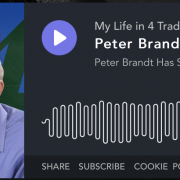







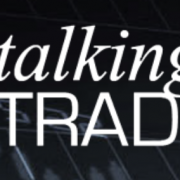

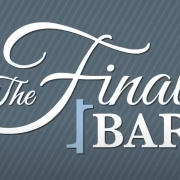





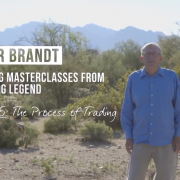



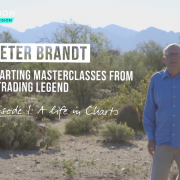
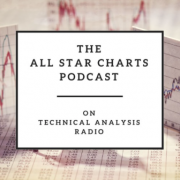









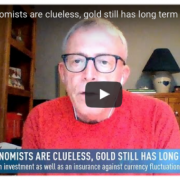


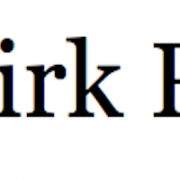

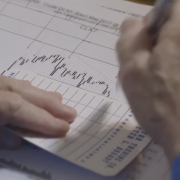







Factor Trade Sizing Descriptions
/by Peter BrandtMember Twitter March 16, 2022: The factor that results in more losses for you than any other is…
/by Peter BrandtYet another view of the Pareto Principle
/by Peter BrandtMetrics that Matter (October 2021)
/by Peter BrandtIntroduction to the concept of “Leakage”
/by Peter BrandtRisk and Trade Management Compilation
/by Peter BrandtBreakout thresholds – A protocol for entering trades using ATR stop levels
/by Peter BrandtBuilding Performance, One Trade at a Time, November 2019
/by Peter BrandtFactor’s Trade Risk Worksheet Grid
/by Peter BrandtActive and Aggressive Risk Management Examples from Factor Member Private Twitter
/by Peter BrandtBuying new highs in stocks after a significant general market correction
/by Peter BrandtThe Factor Trading Plan – Simplified Version
/by Peter BrandtTrade Entry and Exit Tactics
/by Peter BrandtThree Most Important Ways to Measure Performance: Profit Factor, Gain-to-Pain Ratio, and Closed Trade NAV Curve
/by Peter BrandtHow to Determine the Sizing of a Trade
/by Peter BrandtRisk Management Quick Tips
/by Peter BrandtLayering and Trade Management
/by Peter BrandtTrading Futures and Forex Related ETFs is a Foolish Use of Capital
/by Peter BrandtA Brief Introduction to Probability Theory and the Random Distribution of Results: Understanding the Concept of Sequencing in a Trading Operation
/by Peter Brandt